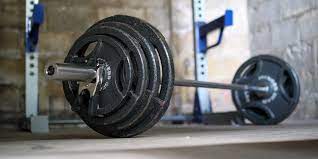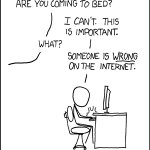
In the last few weeks I’ve been making big changes to my nutrition and fitness routine, which call for some careful reflection. The whole thing started when a colleague–a badass athlete in her own right–lent me her copy of Stacy Sims’ new. book Next Level, the first (as far as I know) book about perimenopausal and menopausal athlete. Just a few days later, I attended an open water swim camp in Hawaii, where my wonderful and knowledgeable coach, Celeste St. Pierre, recommended the same book, and impressed upon me the vital importance of Lifting Heavy Shit.
Up to this point, my athletic endeavors were almost squarely in the endurance world. I swam long (and slow) in open waters, transitioning then to multisport to protect myself from injury. In the heyday of my marathon swimming days, I did no cross training whatsoever – only swimming. Later, I added on calisthenics, in the form of fusion classes (which I took and taught) and antigravity fitness (using silky hammocks.) I’m not quite sure whether I was fully aware of the importance of doing all these things at the same time, and I’m also pretty sure I wasn’t told to increase the resistance and challenge or to eat more. Generally speaking, and relatedly, my weight has been almost entirely the product of my diet: when I eat more and poorly, I gain weight; when, with great control and care, I eat less and well, I lose weight. Going in the former direction is easier than the latter.
For many important biological reasons that Sims explains in a lucid, straightforward way in her book, the wellbeing and athletic priority during perimenopause and beyond should be building lean muscle and bone. For many of us, this means changing our body composition, which is not an easy thing to do and not one that can be accomplished merely with dietary changes. The building block for muscle is protein, which has to be consumed in adequate amounts, and the muscles must be used in a progressively challenging fashion for them to grow stronger.
I read the book cover to cover and then, through the recommendation of another wonderful athletic colleague, was introduced to lifter Casey Johnston and her excellent couch-to-barbell program. Two weeks ago, for the first time, I mounted plates on my barbell, and am quite fascinating with this transformation, though I still have many questions and uncertainties. Here is some of what has been happening:
- I am lifting three times a week – twice at the school gym with my colleague, once or twice at home. This has required a certain change to my routine. I lift on Sunday, Tuesday, and Thursday; I now swim on Wednesday, Friday, and Saturday. I also kept up my pilates on Saturday and my boot camp (which includes lifting) on Sunday. On lifting days I also do a short plyometric set (quick, HIIT-type jumping). Monday is somewhat of a lighter day, though I do ride the cargo e-bike, as I do every weekday, to drop my son off at school. That means shorter but more intense workouts, which is what Sims recommends. It does feel weird, as someone used to endurance workouts, that there’s none of the prolonged suffering that we marathoning people tend to glorify. Hilariously, I am finding the mantra “I can take anything for twenty seconds” useful for both HIIT and lifting.
- I am already experiencing improvement in my strength. Last week I flew to Atlanta for a conference (ASC was very good this year, and I’ve already posted about some of what I learned–on court fees and on extradition) with a big, heavy backpack containing everything I needed for four days. When I got to my airplane seat, I lifted my bag into the overhead compartment–and was immediately struck by a big difference. Reader, it was child’s play. Not that it wasn’t heavy; I was stronger, noticeably so, and it was very gratifying. Same story with groceries. My partner was astonished yesterday when I came back from the co-op with a gigantic box of produce, oat milk cartons, and the like, and carried it myself as if it was nothing despite its weird shape. All of this is very good news and provides ample motivation to keep going.
- The progress arc at the beginning is very satisfying. Every time I lift I think to myself, there’s no way in hell I’ll be able to lift five pounds more in two days. And then the next workout arrives, and to my astonishment, I can! I’m sure this fast progress will slow down as I progress, but for now, this linear improvement (2.5-lb increments for upper body, 5-lb increments for lower body) is providing a huge motivation boost. This is a good thing. Throughout my life, I’ve often see-sawed between two good sensations: growth (picking up a sport or a skill I know nothing about and getting through the uncomfortable months/years that it takes to become “good enough” to enjoy it) and relishing skill (making small improvements in a sport I’m already quite proficient at.) Sometimes it feels like I need to stay in my comfort zone (as with, say, swimming or flute.) Sometimes I pick up something new (such as tai chi or the handpan.) Now is a time for the latter, and I feel excitement building for when I get “good enough” to know what I’m doing.
- I’ve also introduced some changes to my swimming. At the open water swim camp, Celeste taught us to activate our muscles through dryland practice before getting into the water. I’m finding this highly effective, and I’ve made one more adjustment–my sets are shorter and sprintier now. I cover fewer yards overall, but the intensity of the practice has increased, which is exhilarating. I’m also hitting some surprising times with my 50s and 100s – times I hadn’t seen in the pool since I was training for Tampa Bay in 2012. At 48, this is gratifying and makes me feel like I’m doing the right thing.
- I’m still not 100% sure what I’m doing, nutrition-wise, despite having gotten excellent advice. Sims’ book, the coaching figures in my life, and my awesome new acquaintance, vegan fitness coach Karina Inkster, have all emphasized two principles: I have to eat a lot more than I’ve been eating, and I have to prioritize protein. These things go hand in hand, because it is a pretty impossible job to double one’s protein intake (especially on a vegan diet) and keep the caloric situation low. Sims discusses the common problem of low energy availability, or LEA, and stresses how crucial it is to fuel properly before, during, and after workouts. We vegans love to scoff at ignorant meat eaters who ask us “where do you get your protein?” and, indeed, one can get a lot of protein on a plant-based diet, but it does require more planning, as the things one should eat (good, plant based food with fiber and phytonutrients) don’t tend to come in easy protein-rich packages. On Karina’s website, one can find lots of excellent resources for protein and other nutrition strategies for vegan athletes. She even has a handy vegan protein calculator, which instructed me to eat twice as much protein as I had been eating. This means I’m chasing protein throughout the day (tofu scramble; adding vegan protein powder to green smoothies; adding hemp, flax, and chia to my morning oatmeal) and all the other calories sort of work themselves out.
- I’m also not sure what’s happening with my body size-wise. Despite eating almost twice what I ate during the Big Weight Loss and Health Restoring Project, and despite putting on about 12 lbs or so, my size doesn’t feel significantly different. My measurements are almost the same. The scale is unhelpful, as its body composition readings are inconsistent and bizarre. Parts of me feel more muscular, other parts softer, and, in general, I feel more like a work in progress than like the chiseled ancient Greek statue my mind imprinted on as the picture of health and strength. I can’t argue with the functional improvement, but there is definitely a part of me that is terrified of regaining all the weight I lost through so much effort–if only because I have wonderful clothes and would like to continue wearing them. This is a really interesting and juicy place to explore in meditation–attachment to body, attachment to clothes, the possibility that I purchased my current wardrobe as a protective talisman against weight gain, lots of new things to learn about myself and my relationship to my body.
- Spiritually, the whole thing is weird, fun, and a bit discombobulating. One of my favorite teachers, Pema Chödrön, speaks of “positive groundlessness“: coming to a sense of tentative, floating peace with the idea that nothing is permanent and there is really nothing to hold on to:
The idea of letting go of fear and becoming comfortable with groundlessness has been a recurring theme for me in the last few weeks, pretty much since I participated in the Smithfield Trial and experienced the elation of its aftermath. Recently, Wayne Hsiung and I recorded our third podcast together, in which I espoused a theory about the judge’s closed fist where it came to affirmative defenses and evidence in the trial. I’m increasingly convinced that what drives these aggressive judicial court-management maneuvers is the fear that the trial will evolve and bloat into some landmark political moment beyond the judge’s ability to handle. Fear of uncertainty, of having nothing to hold on to, no buffer or protection, drives a lot of behavior, including very bad behavior. This includes my own fear: during the trial, as Wayne and I discuss in the podcast, I was sure that taking a mistrial was the right choice for him, but he decided to take the chance and see what the jury would decide. Happily, he was proven right. It was a moment that taught me that Wayne has more guts than me, and that I need to develop my relationship with positive groundlessness.
In his book Becoming a Man, one of my favorite authors, Paul Monette, wrote: “When you finally come out, there’s a pain that stops, and you know it will never hurt like that again, no matter how much you lose or how bad you die.” I think this is true for virtually anything worth being brave about: animal rights, helping incarcerated people, fighting against an unjust regime, resisting orthodoxies (from the right and from the left), and changing something as solid and fundamental as one’s relationship with one’s body. Let’s just say this lifting journey is a wonderful opportunity to explore my own bravery in picking up something new, and it’s a spiritual journey as well.




No comment yet, add your voice below!